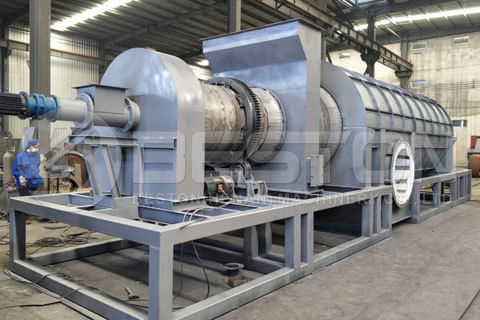What You Should Understand the Straw To Charcoal Machine
The straw to charcoal machine works with a process of crushing, drying, volatile smoke, high-temperature carbonization, charcoal enrichment, sulfur emissions, cooling of your end product, which finally ends in a charcoal product produced from straw together with other by-products including combustible gas, wood vinegar, and tar.
Carbonization technology will be the core element of the straw charcoal machine. Carbonization of waste like straw went onto extend the raw materials which you can use to make charcoal. The charcoal created from the biomass-waste materials like straw, sawdust, wood and more is called biomass charcoal and referenced as a form of bio-carbon.
The Working Processes Of Straw Carbonization
Straw to charcoal machines is efficient in relation to processing a raw material like straw into different kinds of charcoal. These waste-to-energy projects are useful in many industries, which uses a competent heating source that is generated in the raw materials as a way to produce end products for example wood vinegar, charcoal, and wood tar. These end products all hold their particular value and therefore are used in numerous different industries.
The raw materials generally include forestry waste, straw, fruit shells, weeds, biomass waste, nuts, MSW (municipal solid waste), and sewage sludge: https://www.bestongroup.com/sewage-sludge-treatment-plant/. The Two requirements with regards to pre-therapy for these raw materials, is that the moisture content cannot exceed 20% or maybe the material should be passed by way of a dryer. The 2nd requirement involves ensuring the size of the waste materials will not exceed 50mm. For larger items, they first should be passed via a crusher.
The straw to charcoal carbonization equipment is made up of carbonization host, condenser system, spray tower, air conditioning, as well as a discharging system.
These carbonization processes typically involve 4 main steps. Including high-temperature pyrolysis, sulfur emission, smoke discharge, and ultimately charcoal enrichment.
In general, the primary heating source includes gas or charcoal. Right after the furnace continues to be heated for half an hour, the straw generates a combustible gas, which happens to be then purified in the spray tower which in turn supplies heat on the carbonization furnace or the dryer.
The full production procedure of Straw to Charcoal is utterly continuous, that helps to drastically improve working efficiency in addition to output yield. In addition, it assists with saving costs around the requirement of labor.
These charcoal yields are typically 3:1 or 4:1. Yet these ratios can vary on account of external conditions and different kinds of raw materials.
The end products generated through straw carbonization include wood vinegar, combustible gas, tar, and charcoal. Every one of these end products includes wide applications which create significant economic benefits along with keeping environmental surroundings in mind.
The straw charcoal incorporates a high-heat value which can be used as a fuel directly, or as BBQ charcoal which is actually a a lot more green option in comparison with traditional coal. My page: https://www.bestongroup.com/.
The wood vinegar and tar can be used in agricultural industries and is a great additive to chemical fertilizers. The combustible gas produced is either recovered directly or found in other industries by means of fuel.




